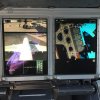jb747
Enthusiast
- Joined
- Mar 9, 2010
- Posts
- 13,426
I spent the weekend at Bathurst, and one of the things I noticed was just how well choreographed all the planes and helicopters were in the air. From having lots of helicopters all buzzing around in pretty close proximity (and missing each other), to having the FA18 fly overhead at the end of the anthem, to the VA jet doing runs up pit straight just before the race.
I remember earlier on in this thread an ATC person mentioned that at special events like Bathurst 1000 they are likely to have someone looking after air traffic. My question is would there likely be a pilots briefing before the weekend? If so what sort of briefing might take place, eg letters / emails send out to all pilots or would they likely get all the pilots together (either via phone hookup or even get everyone in the same room) and go over the plans?
I would expect that there would have been some form of coordinated briefing, but not having been part of anything like that since I left the military, I have no idea what form it would have taken. The F18 people would be quite used to hitting something to the second...probably harder to get the band to do so.





















